Read time: 6 minutes
Why look at the future of pop music?
For one, because the way pop music is composed, packaged, marketed, and consumed tells us a lot about where society is and where it’s going.
If you want to learn about British society in 1963, you could do worse than take a look at the Beatles song, ‘I Saw Her Standing There’. The lyrics give us a glimpse of gender and sexual politics of the day – a romance between a man and a teenage girl at a dance. The instrumentation gives us a snapshot of the technology: a combination of electric (guitars and bass) and acoustic (drum kit) instruments, recorded live in the studio with minimal editing. The way the song was packaged and sold speaks to the economics of the time. It was marketed to teenagers and (in the UK) sold on an LP for the equivalent of £1, which gives us some sense of young people’s purchasing power.
Another good reason to look at the future of pop is that music is a big part of how we experience a period. When you think back to your teenage or student days, you don’t just think about economic trends, government policy or demographic transitions: you think about what you were listening to. And remembering it, you remember the mood of the time – whether you were down in the dumps and angry with life, or walking on clouds and shooting for the moon.
What sort of future are we walking towards? A look at the technology, economics and moods of pop today is one way to find out.
Here are some signals of change I’m noticing in the world of pop: what sort of waves are you picking up?
Signal #1: The rise of the ‘pop posse cut’
In 2017, producer Calvin Harris released Funk Wav Bounces Vol 1, an album which drew attention partly for the sheer number of celebrity appearances (21!). Almost every song has at two or three guest features, to… well, a mixed effect.
In 2005, Chris Anderson wrote a book called The Long Tail. In it, he argued that the internet would shift the focus of the pop music industry away from big hits, and towards the ‘long tail’ – artists with small followings. Because the internet means fans can have direct access to the music they love, there’ll be less emphasis on a few huge stars and more room for a broader field of artists operating in their own smaller niches.
That hasn’t happened: 13 years after Anderson’s book, a greater share of the profits in the music industry is going to a smaller number number of artists. Last year, 77% of the profits in the music business were accumulated by 1% of the artists. Even with access to a constantly expanding field of musicians, the big hits are bigger than ever. The situation is increasingly winner-take-all.
With so much at stake, producers and managers are stacking the odds in their favour with what Stereogum writer Chris DeVille describes as ‘pop posse cuts’ – three, four or five artists piling onto a single track like a superhero team-up.
[[{“fid”:”8953″,”view_mode”:”default”,”fields”:{“format”:”default”,”alignment”:””,”field_file_image_alt_text[und][0][value]”:”Lil’ Kim, Christina Aguilera, Mya and Pink in 2001: true portent of the future.”,”field_file_image_title_text[und][0][value]”:”mtv.com”},”type”:”media”,”field_deltas”:{“1”:{“format”:”default”,”alignment”:””,”field_file_image_alt_text[und][0][value]”:”Lil’ Kim, Christina Aguilera, Mya and Pink in 2001: true portent of the future.”,”field_file_image_title_text[und][0][value]”:”mtv.com”}},”attributes”:{“alt”:”Lil’ Kim, Christina Aguilera, Mya and Pink in 2001: true portent of the future.”,”title”:”mtv.com”,”style”:”height: 530px; width: 800px;”,”class”:”media-element file-default”,”data-delta”:”1″}}]]
This was a move pioneered by big charity singles (We Are The World and Do They Know It’s Christmas?) in the 1980s, and more recently by the 2001 cover of Lady Marmalade by Lil’ Kim, Christina Aguilera, Mya and Pink.
The rationale for record labels and producers is simple cross-marketing. In an industry where there’s no room for anything but smash hits, it’s tempting to just keep piling on artists in the hope that audiences will recognise at least one of them.
What’s interesting is that it moves pop songs away from being stand-alone pieces of music. Increasingly, a pop song functions as an advertisement, referencing and linking you to related songs and artists – similarly to the way that the Marvel comic book films have been described as ads for other films in the series.
What does it mean when cultural items like songs and films no longer function as stand-alone experiences, but operate as nodes connecting you to countless other artists, products and events?
It points to a future in which we don’t experience music (or any other cultural form) on a song by song basis, but as a heavily hyperlinked experience, where every chorus, hook and verse invites you to jump to related content. The question is, who decides the journey?
Signal #2: ABBA’s 2019 tour will be entirely digital
New artists are increasingly competing not just against their peers, but against all the pop musicians in history. Streaming services mean that people can access music from 50 years ago as easily as they can hear today’s newest albums.
Besides this, the meaning of ‘live’ music is changing. Not only do artists not have to be physically present: they don’t even need to be alive. Tupac’s posthumous hologram at Coachella in 2012 is a good example of the nostalgia industry cranking into gear.
(This strange performance is made stranger by the fact that from the angle he’s standing at, Snoop Dogg can’t see the Tupac hologram at all.)
ABBA has just announced its 2019 world tour will be ‘entirely digital’. And why not? What’s the point in seeing ageing pop stars struggle to make it through a set, when you could watch them in their heyday, delivering consistently brilliant sets every night?
In 2050, Taylor Swift will be 61 years old, but she could be on tour as a 25 year old hologram, doing 25 cities a night.
What are the impacts for tomorrow’s pop? As an emerging pop artist, the competition is only going to get fiercer, and the compromises expected of you even more brutal. And for the rest of us: how will endless heydays affect our sense of living in the moment? Will we become even less tolerant of age?
Signal #3: Algorithmic compositions ‘indistinguishable’ from Bach
DeepBach is an algorithmic program that uses machine-learning to analyse Johann Sebastian Bach’s compositions, and then produces its own variations. The results are convincing enough that many people can’t distinguish between DeepBach and the real thing.
A Technology Review blog notes:
‘The team asked more than 1,600 people to listen two different harmonies of the same melody. More than 400 of them were professional musicians or music students. When given a DeepBach-generated harmony, around half the voters judged that it was composed by Bach. Even when confronted with music composed by Bach himself, participants only judged that correctly 75 percent of the time.’
DeepBach is one of many algorithmic composition programs that have emerged in recent years.
Giles Bowkett’s Archaeopteryx is an open-source artificial intelligence program that writes and plays its own dance music. Cal Newport describes watching it in action:
‘An innocuous command typed into the Mac command line starts an aggressive and complicated techno breakbeat; a single value is changed in the Bayesian probability matrices underlying the AI engine, and all of a sudden the beat transforms into something entirely different. It’s as if musical creativity itself has been reduced to a series of equations and some lines of terse code.’
The proliferation of these and other algorithmic composition programs is a key indicator of where music is heading. Increasingly, music is written by – or in collaboration with – algorithms. The way it works is that you give the program the parameters to work within – instrumentation, tempo, genre, mood – and it decides on the actual notes, melodies and rhythms.
So far much of this algorithmically generated music has been used for incidental and background music. But as we move forward, AI will play a very large part in building the templates for songs and albums to maximise time and minimise human labour.
Since the introduction of personal listening devices like the Walkman in the early 80s, commentators have argued that music is becoming both more ubiquitous and more disposable. Streaming services like Spotify structure much of their listening experience around mood – offering themed playlists for every possible moment.
Algorithmic compositions point to a future in which we’ll be able to go beyond curating playlists. Instead, in conversation with AI personal assistants, would could co-compose our own original soundtracks to fit our mood throughout each day.
Signal #4: K-Pop boy band EXO is one group in Korea and another in China
In 2017, BTS’ album Love Yourself: Her debuted at number 7 on the US Billboard chart. Two singles from the album were certified Gold by the Recording Industry Association of America, a first for any Korean act ever.
The mainstream success of BTS in the United States (still the world’s biggest record-buying market) is a significant endorsement of the K-Pop approach: which is essentially manufactured art created by corporations.
Lee Soo-Man, founder of SM Entertainment and the grand mogul of the K-Pop system, described K-Pop as ‘cultural technology’. His vision for this cultural technology includes total control over his artists, who live in compounds owned by their record companies. Agencies recruit children from age 12, and train them intensively for up to seven years: school during the day, singing and choreography every night, with extensive media coaching.
The young stars make no creative decisions, and almost all aspects of their music and public image are determined by their companies.
Some agencies forbid their trainees to have romantic relationships and require them to be supervised whenever they are out in public. There is no pretence that these idols have ‘creative control’ of their art. The focus instead is on the high production values of their performances and videos.
[[{“fid”:”8954″,”view_mode”:”default”,”fields”:{“format”:”default”,”alignment”:””,”field_file_image_alt_text[und][0][value]”:”EXO – the Korean and Chinese wings together”,”field_file_image_title_text[und][0][value]”:”Wikimedia Commons”},”type”:”media”,”field_deltas”:{“3”:{“format”:”default”,”alignment”:””,”field_file_image_alt_text[und][0][value]”:”EXO – the Korean and Chinese wings together”,”field_file_image_title_text[und][0][value]”:”Wikimedia Commons”}},”attributes”:{“alt”:”EXO – the Korean and Chinese wings together”,”title”:”Wikimedia Commons”,”style”:”height: 526px; width: 800px;”,”class”:”media-element file-default”,”data-delta”:”3″}}]]
Recent boy band EXO has twelve boys: six of them are Korean speakers based in Seoul, and six are Mandarin speakers who live in China. The two groups release songs at the same time in both countries in different languages. They are as much a franchise as they are a band – and no-one minds.
The choreographed precision of Lee Soo-Man’s ‘cultural technology’ is one possibility for the future of pop. Another is the carefully cultivated aura of ‘authenticity’ adopted by groups like British boy band One Direction.
[[{“fid”:”8955″,”view_mode”:”default”,”fields”:{“format”:”default”,”alignment”:””,”field_file_image_alt_text[und][0][value]”:”One Direction, for real.”,”field_file_image_title_text[und][0][value]”:”J-14″},”type”:”media”,”field_deltas”:{“4”:{“format”:”default”,”alignment”:””,”field_file_image_alt_text[und][0][value]”:”One Direction, for real.”,”field_file_image_title_text[und][0][value]”:”J-14″}},”attributes”:{“alt”:”One Direction, for real.”,”title”:”J-14″,”style”:”height: 420px; width: 800px;”,”class”:”media-element file-default”,”data-delta”:”4″}}]]
One Direction, for real.
The members of One Direction – and their handlers – mastered a kind of performed authenticity and a skilful handling of the media. Their videos and interviews portrayed them as ‘real’ and ‘unfiltered’, the opposite of a manufactured boy band – while being the perfect example of a manufactured boy band.
As audiences grow more media literate and celebrities are increasingly surveilled at all times, the challenge of appearing genuine and relatable without going off-script at any time is a difficult tightrope for popstars to walk. One Direction fans value that they can relate to their idols, and the band carefully cultivates their ‘everyman’ image. But no record company wants to give a teen pop star unfiltered access to a social media platform if they can avoid it.
The push-pull between control and authenticity will grow more intense as new communications technology means artists can be surveilled at all times. Future pop stars will be defined by the relative value that fans assign between the two.
[[{“fid”:”8956″,”view_mode”:”default”,”fields”:{“format”:”default”,”alignment”:””,”field_file_image_alt_text[und][0][value]”:”The performer Hungry”,”field_file_image_title_text[und][0][value]”:”Zak Krevitt and Thomas McCarty for the New York Times”},”type”:”media”,”field_deltas”:{“5”:{“format”:”default”,”alignment”:””,”field_file_image_alt_text[und][0][value]”:”The performer Hungry”,”field_file_image_title_text[und][0][value]”:”Zak Krevitt and Thomas McCarty for the New York Times”}},”attributes”:{“alt”:”The performer Hungry”,”title”:”Zak Krevitt and Thomas McCarty for the New York Times”,”style”:”height: 640px; width: 800px;”,”class”:”media-element file-default”,”data-delta”:”5″}}]]
Signal #5: Drag art goes post-human in New York
Pop music is frequently a theatre for questions of identity, particularly gender and sexuality.
Pop artists like Madonna introduced (or co-opted) elements of LGBT culture into her hits in the 1980s. Trans artists have featured in Lady Gaga videos such as Telephone. Typically, challenges to identity politics emerge on the fringes, and slowly migrate into the mainstream.
The themes, identities and issues that pop music will explore in 2030 are probably already circulating now in experimental and fringe communities. One recent trend in queer communities that might make its way into the realm of pop music is a focus on ecosexuality.
The term ‘ecosexual’ was coined by American sex educator Annie Sprinkles to identify a new sexual identity focused on a romantic relationship with nature. Sprinkles aim was to make activism “more sexy, fun and diverse”, by bringing an erotic element to our relationship with nature.
What might this look like in a pop context?
Eileen Townsend’s NYT article on ‘post-human drag’ provides a nice illustration of this trend in the queer performance community:
“I think society is coming around to the idea that it’s not a gender binary, that it is not one or the other, that it can be anything in between,” Mr. Jeffries said. “It doesn’t even necessarily have to be all human, and that technology isn’t necessarily the other alternative — that it can be species and creatures that we haven’t even fantasized before.”
As climate change increasingly becomes part of our lived experience, we are forced to become aware of the inseparability between the human and natural worlds. Artists will increasingly play in the ambiguous space of our ecological hopes and anxieties.
What does it mean for the future of human relationships if a pop star announces that they are in love with a cloud of moths, or marries a mountain?
————
David Finnigan is a writer and theatre-maker.
David and collaborator Jordan Prosser are currently developing new performance CrimeForce: LoveTeam about the future of pop music and criminal justice, which will premiere at Nesta’s FutureFest in London in July 2018, with music by Nick McCorriston.

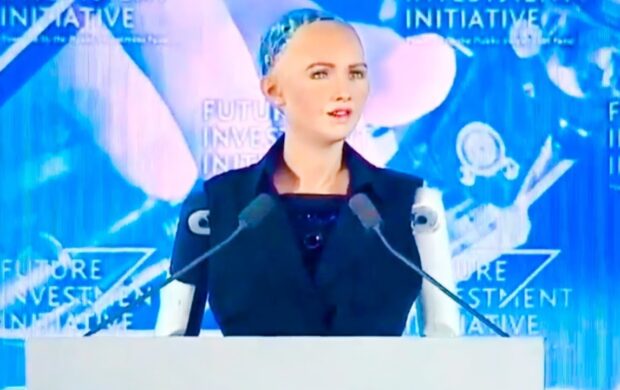
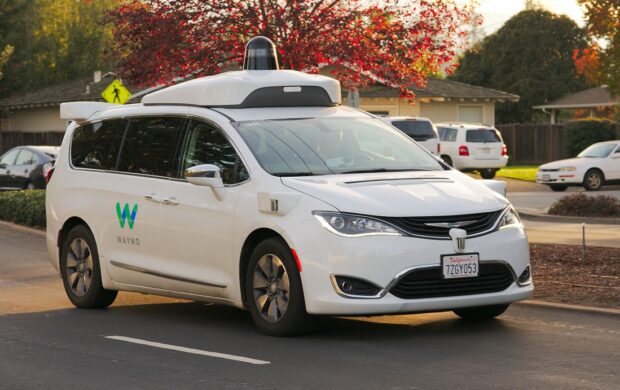
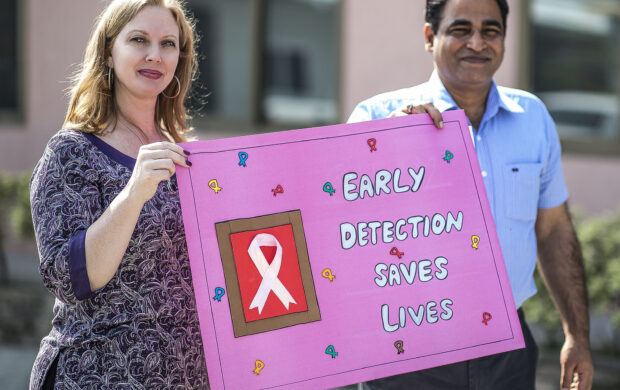


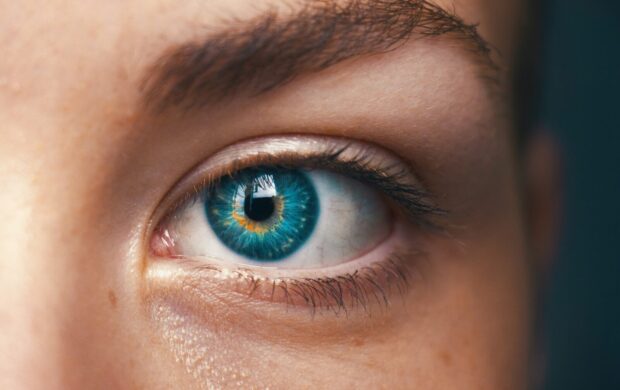
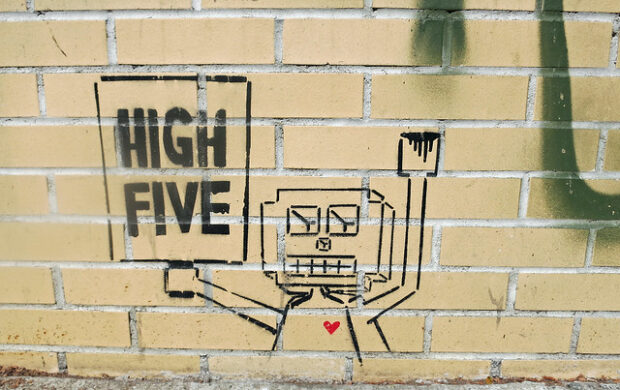


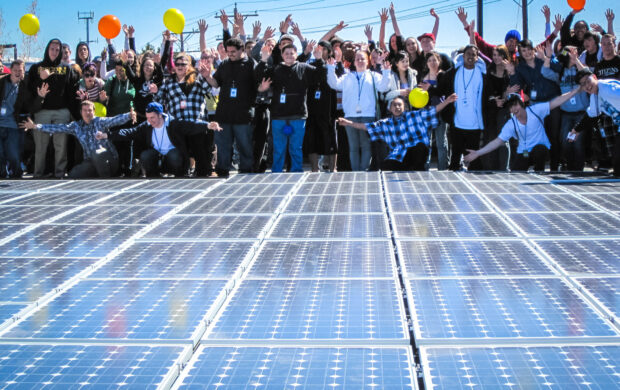

Join discussion